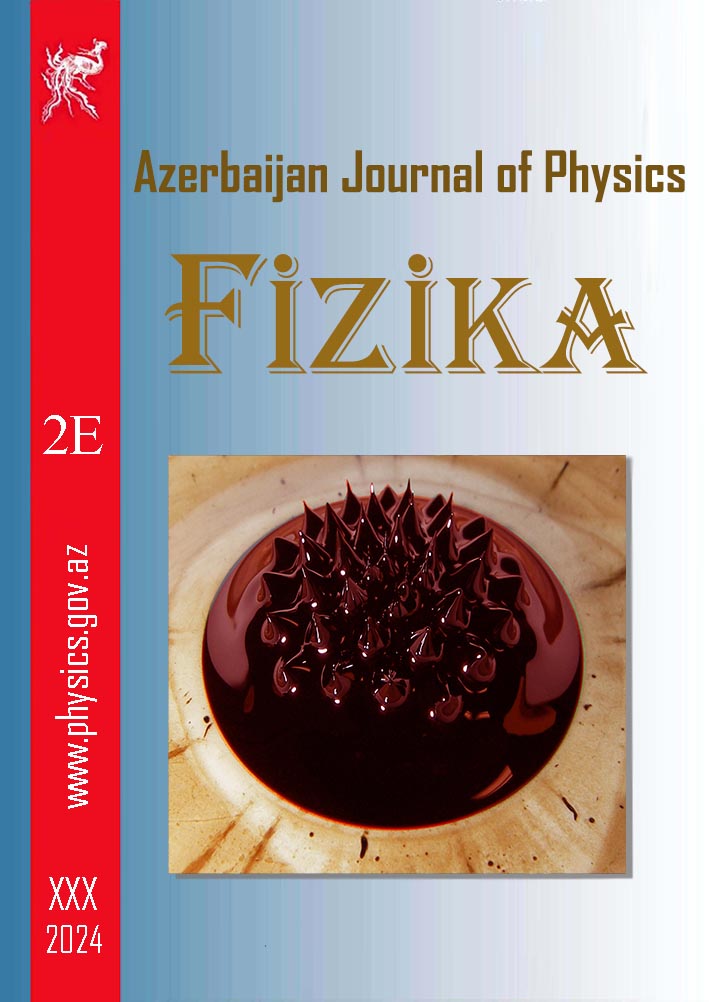ABSTRACT
This article examines advanced diagnostic techniques for assessing the condition and potential faults of transformer insulation systems, with a primary focus on transformer
oil. The purpose of the study is based on the effect of temperature, electrical voltage and specific electrical parameters such as dielectric loss coefficient (tgδ) on the
indicator of wear processes and possible degradation. It discusses the benefits of nanofillers in improving breakdown voltage by binding moisture at low temperatures and
trapping charge at higher temperatures. Techniques such as partial discharge (PD) measurements, frequency response analysis (FRA) and dielectric frequency analysis (DTA)
are evaluated for their effectiveness in early fault detection. The study also explores the use of ultraviolet spectroscopy and artificial neural networks (ANNs) to
accurately estimate the interphase voltage (IFT) of transformer oil. In addition, the detection of substances such as furfural using Raman spectroscopy provides insight
into the aging and longevity of transformer systems. These advances in diagnostics increase the reliability and longevity of transformers and offer solutions to reduce
maintenance costs and prevent faults early, ultimately reducing operating costs and increasing system efficiency.
Keywords: transformer oil, furfural substances, malfunctions, artificial neural networks.
DOI:10.70784/azip.2.2024338
Received: 27.09.2024
Internet publishing: 02.10.2024
AUTHORS & AFFILIATIONS
1. Institute of Physics Ministry of Science and Education Republic of Azerbaijan, 131 H.Javid ave, Baku, AZ-1143, Azerbaijan
2. Azerbaijan State Oil and Industry University, 20 Azadlig ave. Baku, AZ 1010, Azerbaijan
E-mail: aem05@rambler.ru
Graphics and Images


Fig.1-2 Fig.3-4-5
|
[1] Y. Du, Y. Lv, C. Li, et al. ffect of electron shallow trap on breakdown performance of transformer oil-based nanofluids. J. Appl. Phys., 2011, 110, p. 104.
[2] V.Segal, Hjortsberg A., Rabinovich A. et al. AC (60 Hz) and impulse breakdown strength of a colloidal fluid based on transformer oil and magnetite nanoparticles. IEEE Int. Symp. Electrical Insulation, 1998, Vol 2, pp. 619–622.
[3] J. Liu, L.J. Zhou, G.N. Wu, et al. Dielectric frequency response of oilpaper composite insulation modified by nanoparticles, IEEE Trans. Dielectr. Electr. Insul., 2012, 19, (2), pp. 510–520.
[4] Y.X. Zhou, Y.S. Wang, J.H. Tian et al. Breakdown characteristics in transformer oil modified by nanoparticles. High Volt. Eng., 2010, 36, (5), pp. 1155–1159 (in Chinese).
[5] S. Vladimir, H. Arne, R. Arnold. et al. AC (60 Hz) and impulse breakdown strength of a colloidal fluid based on transformer oil and magnetite nanoparticles. IEEE Int. Symp. Electrical Insulation, Arlington, Virginia, USA, 1998, pp. 619–622.
[6] P.P.C. Sartoratto, A.V.S. Neto, E.C.D. Lima et al. Preparation and electrical properties of oil-based magnetic fluids. J. Appl. Phys., 2005, 97, (10), p. 10Q917.
[7] S.C. Pugazhendhi. Experimental evaluation on dielectric and thermal characteristics of nano filler added transformer oil, Int. Conf. High Voltage Engineering and Application, Shanghai, China, September 17–20, 2012.
[8] E.G. Atiya, D.E.A. Mansour, R.M. Khattab et al. Dispersion behavior and breakdown strength of transformer oil filled with TiO2 nanoparticles, IEEE Trans. Dielectr. Electr. Insul., 2015, 22, (5), pp. 2463–2472.
[9] A.M. Abd-Elhady, M.E. Ibrahim, T.A. Taha et al. “Dielectric and thermal properties of transformer oil modified by semiconductive CdS quantum dots”, J. Electron. Mater., 2016, 45, (10), pp. 4755–4761
[10] G.D. Peppas, V.P. Charalampakos, E.C. Pyrgioti et al. Statistical investigation of AC breakdown voltage of nanofluids compared with mineral and natural ester oil, IET Sci. Meas. Technol., 2016, 10, (6), pp. 644–652.
[11] Yue-fan D., Yv-zhen L., Chengrong L. et al.: Effect of semiconductive nanoparticles on insulating performances of transformer oil, IEEE Trans. Dielectr. Electr. Insul., 2012, 19, (3), pp. 770–776.
[12] Z. Zhaotao, L. Jian, Z. Pin Z., et al. Electrical properties of nano-modified insulating vegetable oil. IEEE Conf. Electrical, Insulation Dielectric Phenomena (CEIDP), 2010, pp. 1–4.
[13] D.A. Mansour, E.D. Atiya, R.M. Khattab et al. Effect of titania nanoparticles on the dielectric properties of transformer oil-based nanofluids. IEEE CEIDP 2012 in Montreal, Québec, Canada, 2012, pp. 295–298.
[14] H. Jin, T. Andritsch, P.H.F. Morshuis, et al. AC breakdown voltage and viscosity of mineral oil based SiO2 nanofluids. IEEE Conf. Electrical Insulation Dielectric Phenomena (CEIDP), Canada, 2012, pp. 902–905.
[15] A. Katiyar, P. Dhar, T. Nandi, et al. Effects of nanostructure permittivity and dimensions on the increased dielectric strength of nano insulating oils, Colloids Surf. A, 2016, 509, pp. 235–243.
[16] A. Guinier. X-ray diffraction in crystals, imperfect crystals and amorphous Bodies. (W.H. Freeman, San Franciso, CA, 1963), p. 124.
[17] D. Martin, Z.D. Wang. Statistical analysis of the AC breakdown voltages of ester based transformer oils, IEEE Trans. Dielectr. Electr. Insul., 2008, 15, (4), pp. 1044–1050.
|
